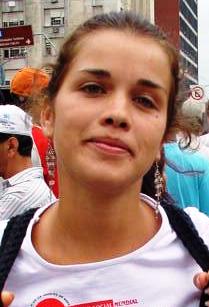Saving Energy - New Ways to Create More Efficient Solar Panels
by Shannon Combs

Shannon Combs
My name is Shannon Combs and currently I write for the energy saving residential solar panels weblog. The blog in many respects serves to assist energy savings minded home and business owners to convert to solar energy.
Harnessing the sun as a means to save energy is truly a passion of mine, and I wish to share and discuss recently discovered ways to manufacture more productive and more efficient solar Pv panels.
While silicon is actually the market common semiconductor in the majority of electric products, which includes the energy saving pv cells that pv panels employ to transform sun rays into power, it is hardly the most efficient component available.
For instance, the semiconductor gallium arsenide and similar substance semiconductors provide nearly double the performance as silicon in solar devices, yet they are rarely used in utility-scale applications mainly because of their high construction value.
University. of Illinois professors J. Rogers and X. Li investigated lower-cost techniques to manufacture thin films of gallium arsenide that also granted adaptability in the types of products they can be integrated into.
If you could lower significantly the price of gallium arsenide and other compound semiconductors, then you might expand their variety of applications.
Usually, gallium arsenide is placed in a individual thin layer on a small wafer. Either the ideal unit is made specifically on the wafer, or the semiconductor-coated wafer is break up into chips of the preferred dimension. The Illinois group considered to put in numerous levels of the material on a single wafer, producing a layered, “pancake” stack of gallium arsenide thin films.
If you increase ten layers in 1 growth, you simply have to load the wafer one time. If you do this in 10 growths, loading and unloading with temperature ramp-up as well as ramp-down get a lot of time. If you consider what is necessary for every growth – the machine, the research, the time, the workers – the overhead saving this approach gives is a significant expense decrease.
After that the experts independently peel off the layers and transfer them. To accomplish this, the stacks alternate layers of aluminum arsenide with the gallium arsenide. Bathing the stacks in a solution of acid and an oxidizing agent dissolves the levels of aluminum arsenide, freeing the individual small sheets of gallium arsenide.
A soft stamp-like device selects up the layers, one at a time from the top down, for transfer to one more substrate – glass, plastic-type or silicon, based on the application. Then the wafer could be reused for another growth.
By executing this it's possible to generate a lot more material more rapidly and much more price efficiently. This process could create bulk quantities of material, as compared to merely the thin single-layer manner in which it is usually grown.
Freeing the material from the wafer additionally opens the chance of flexible, thin-film electronics produced with gallium arsenide or many other high-speed semiconductors. To make products which could conform but still keep higher efficiency, that’s significant.
Within the internationally recognized Nature Weekly Journal of Science, the team explains its methods and displays three types of units using gallium arsenide chips produced in multilayer stacks: light products, high-speed transistors and photo voltaic cells. The creators additionally provide a comprehensive cost comparison.
Another benefit associated with the multilayer technique is the release from area constraints, especially essential for photo voltaic cells. As the layers are eliminated from the stack, they could be laid out side-by-side on one more substrate to create a much larger surface area, whereas the standard single-layer method restricts area to the size of the wafer.
With solar panels, in order to achieve the maximum energy savings potential, a large surface area is required. In an extreme situation we might grow enough layers to have 10 times the area of the conventional.
Up coming, the team plans to explore more possible item applications and other semiconductor materials which might adapt to multilayer growth.

